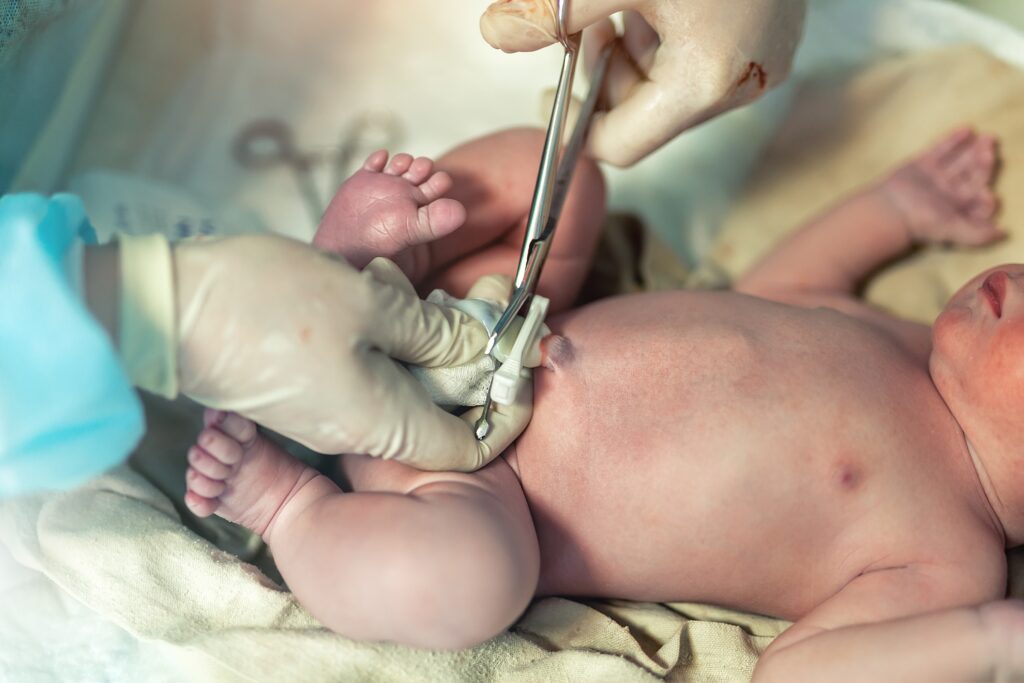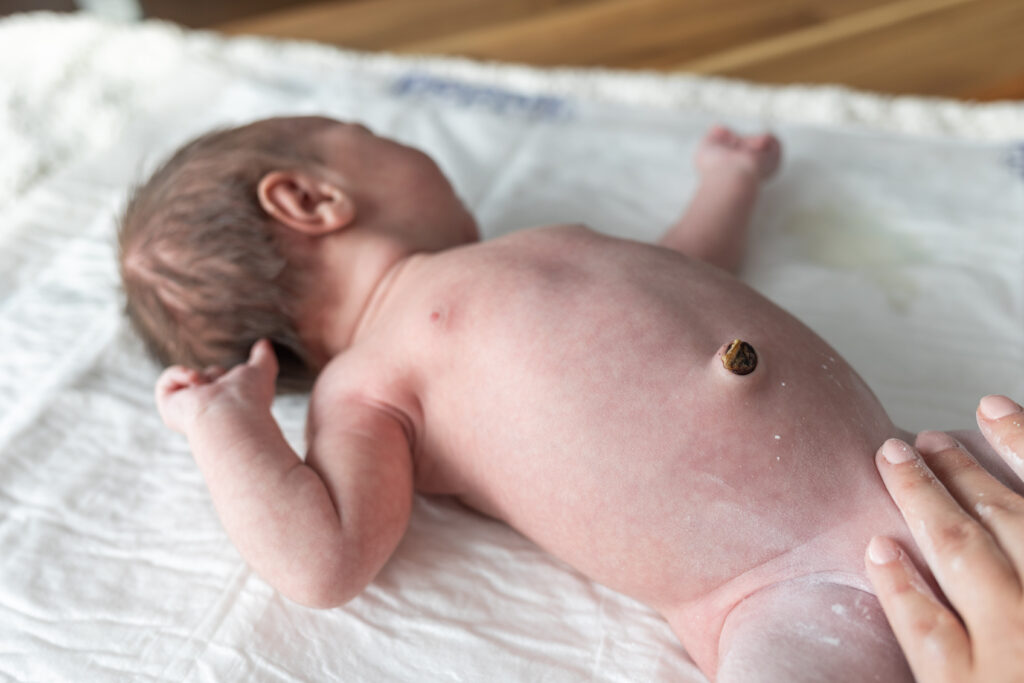
- +61 1300 704 750
- admin@parentinggenie.com.au
- PO Box 706, Townsville, QLD 4810

Genie Chat

Caring for a newborn can be full of joy, but it also comes with many new things to learn, especially for first-time parents. One essential task is caring for your baby’s umbilical cord. In those first few weeks, the area around the umbilical cord needs special care to heal properly. Although it might seem a little intimidating at first, you can keep your baby comfortable and safe while it heals with the right tips and gentle care.
The umbilical cord connects your baby to the placenta in your womb, which supplies them with nourishment and oxygen. After birth, the cord is cut, leaving a little stump on your baby’s tummy. This stump will dry out and fall off within one to three weeks of birth, but it must be appropriately cared for.
This blog will cover everything you need to know about umbilical cord care, including advice for keeping your baby healthy and comfortable.
The most important thing to remember when looking after your baby’s umbilical cord stump is to keep it clean and dry. The stump must dry completely before it falls off, so avoid getting it wet whenever possible.
Here are some tips for keeping the region dry:
It may be tempting to touch or pull on the stump, especially if it appears to be about to come off, but leave it alone. Allow the stump to fall out naturally in its own time. Pulling or picking at it may result in irritation or infection.
If the stump is hanging by a thread, be patient. It’ll be off soon!
While it is rare for an umbilical cord to become infected, it is something to be aware of. If you see any of the following indicators, it may suggest an infection, and you should consult your doctor:
The umbilical cord stump usually heals without issues. However, it is always a good idea to monitor the area and call your doctor if you have any concerns.
Exposing the umbilical cord stump to air is another excellent way to speed its healing. The more air the stump gets, the faster it dries up.
Here are several ways to help it breathe:
When the cord slips off, it is common to notice blood or fluid at the base. This isn’t cause for concern; it’s simply part of the healing process. You may also notice that the belly button area seems damp or pink for a few days after the stump has fallen out. This will disappear after the skin heals.
Once the stump is removed, you can give your infant frequent baths. However, be cautious around the belly button until it has completely healed.

After the stump has fallen off, you may detect a reddish lump in your baby’s belly button that does not appear to disappear. This lump is known as an umbilical granuloma. It is usually harmless and painless, but may require treatment if it does not clear up on its own.
If you detect an umbilical granuloma, present it to your doctor. They can recommend essential therapies to help it heal properly.
As a new parent, you may have a lot of questions regarding how to care for your baby’s umbilical stump. Here are the answers to some popular questions:
Can I use alcohol to clean the stump? Previously, parents were often encouraged to wipe the umbilical cord stump with alcohol. However, new research shows that allowing the stump to dry naturally, without alcohol, speeds up healing.
When should the stump fall off? The stump usually falls out between one and three weeks after birth. If it has not gone off after three weeks, consult your doctor for advice.
What if the stump bleeds a little as it falls off? When the stump slips off, there is usually a small amount of blood or fluid. If there is a lot of bleeding or it does not stop fast, call your doctor.
Following these simple procedures will guarantee that your baby’s umbilical cord stump heals correctly and without issues.
The umbilical cord stump usually heals on its own without any problems. However, there are a few indicators to watch for that may warrant a doctor’s appointment.
Contact your healthcare provider if:
Your healthcare professional can provide advice and treatment if necessary, but in most circumstances, umbilical cord care is straightforward.
Caring for your baby’s umbilical cord stump may seem daunting at first, but with the proper care, it will heal fast and effortlessly. The goal is to keep the area clean, dry, and well-ventilated. Following these suggestions and understanding what to look for can ensure your baby’s belly button heals properly.
For more personalised advice or if you have any questions, consider booking a consultation with Parenting Genie. They have Parenting Live Experts who are available to help with any parenting queries. They also offer 1-on-1 consultations and 24/7 access to Genie Chat for instant answers. You don’t have to go through this alone—let Parenting Genie help you on your parenting journey!
Raising Children has more tips for umbilical cord care.